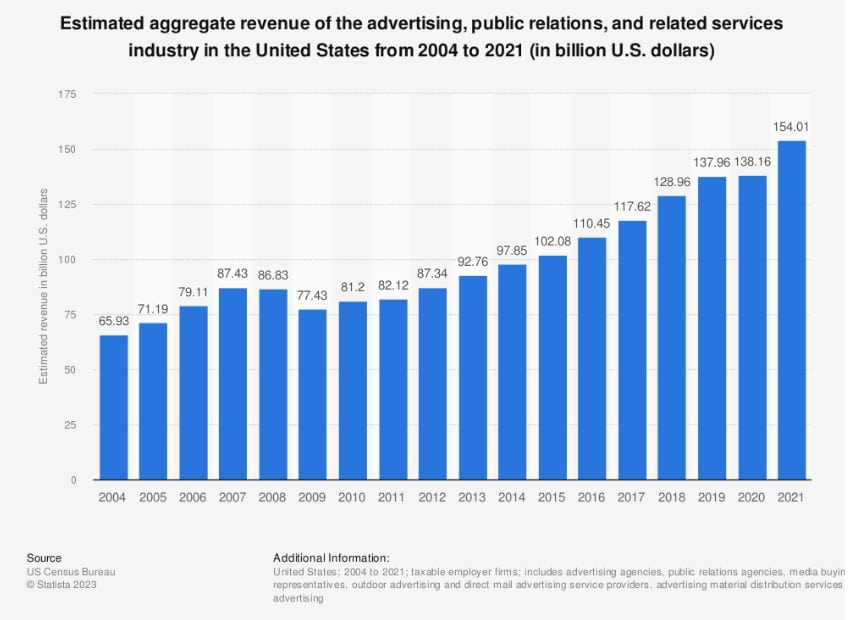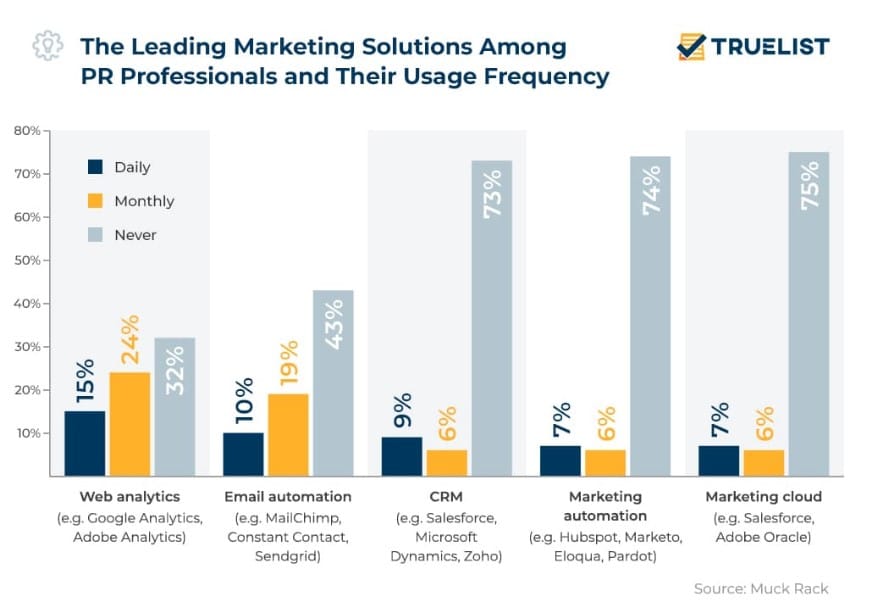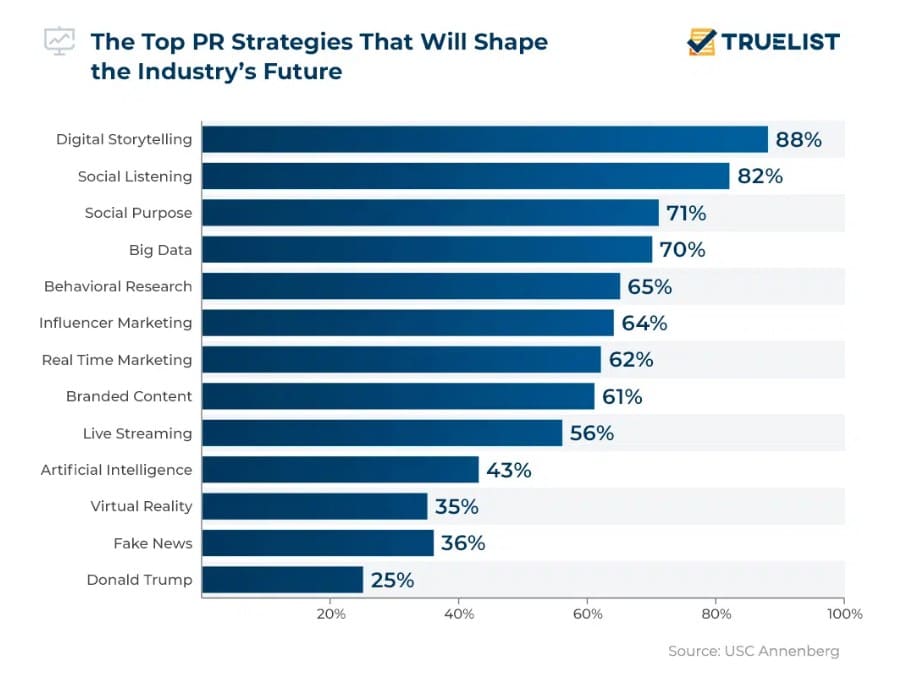If you’re a larger business, then there’s a good chance you have a dedicated PR team or even use an external specialist PR firm. Even a smaller organization will have someone responsible for PR work, maybe a member of their marketing team. It can be an essential part of how you portray yourself to the ‘outside’ world.
In fact, the global PR industry grew by some 9.1 percent in 2022, with the top 250 firms reporting an income of $17.1 billion. That shows just how important many businesses consider PR to be and the many different uses PR can be put to. No matter what sort of PR staff you hire, just how do you write an effective PR brief that gets your points across?

Image sourced from Statista
A public relations overview
In the world of business, PR represents the strategies and ways that a company presents information to the public. In many cases, this is done via the media in the form of a news conference or press release. But it can also include statements released on social media or information sent by email. On a smaller scale, it could also be information that is solely sent to shareholders of the company.
PR can be used in a number of different scenarios. It may be to announce something negative, such as a data breach, that you want to put a positive spin on and let people know what action you’re taking. You can also use it in positive scenarios, such as announcing a new product launch or a company expansion that will create new jobs. Simply put, PR is a way to disseminate important information from you to the world.

Image sourced from truelist.com
The role of a PR brief
A PR brief can take different forms depending on your intended purpose. If you’re looking to engage a PR company to work for you, then your brief will contain all pertinent details about your company. This can include all your company information, what you’re trying to achieve, what your long-term goals are, and so on. In most cases, you would only send that brief to PR firms on your shortlist.
Once you have a firm on board (or have your own in-house PR team), a PR brief will often have the same details but customized to what you need. For example, suppose you want a press release about a VoIP business phones campaign you’re launching. In that case, you’d brief them on information about the product, the campaign goals, and any other information you feel is relevant.

Image sourced from truelist.co (data source)
How to write a PR brief
You may think that writing a PR brief sounds relatively straightforward. Yet it is very often a stage that is handled badly. If you provide your PR team with a badly-written brief, there’s a good chance you’ll end up with a disappointing PR campaign or press release that may fail to meet its objective.
There is one important thing to note: a PR brief should not be a single moment in time. By that, you should think of creating a PR brief as a process. That process begins with identifying your goal, maybe brainstorming some ideas, then writing a first draft. You should then have meetings with the PR team to thrash out the details.
Now, you may think this could be an issue if you have engaged a PR firm in a different city. But with modern communications solutions such as a multi-line business phone system, meetings can be held virtually via conference call or video conference. You also need to remember that you may have no experience in putting together a PR brief while the team is experts in their field.
Every process has a starting point, however, so having some idea of how your PR brief should look is a good idea that may save time in the process.
1. Overview
It helps to begin with an overview of what this PR campaign is about. You might want to include details about your business; who they are, what they do, history, etc. It’s important that any information in the overview is actually relevant to the campaign you are planning. For example, if your campaign is about you launching a cloud contact centre, then you don’t need to include the names of every member of your C-suite.
Include important information in an overview. This can include:
- How long will any campaign last?
- Who is your audience? This might vary from targeted demographics to smaller audiences, such as customers affected by a data breach.
- What is your budget? This can help the PR team identify how best to disseminate any information.
- Strengths and features. This can refer to your brand as a whole or to features of a product you are launching.
2. Goals
Once you have outlined a general overview, then you want to start drilling into the specifics. What exactly does your brand want to achieve with this PR campaign? Is it a general brand awareness campaign to introduce your business to the public? Or is it focusing on a particular product or service that you are offering, and you want to increase sales?
Goals can vary greatly from campaign to campaign, but including a clear objective in your PR brief is going to help your PR team plan better. You may want to include your organization’s mission statement as part of the brief, or you may want to focus on one particular area or product. Data breaches are a great example of using PR effectively. You want to let stakeholders and the public know you are taking positive steps.
3. Audience
While you will have included some mention of this in your overview, you will also want to be more specific. If the PR campaign is for a product launch, have you identified target demographics or the ideal customer profile for that product? By identifying a very specific audience, it better helps your PR team to plan a campaign that will reach that audience.
You will likely have existing data or market research that you can share with the PR team. This might show the typical buyer personas for different categories of products or services. PR professionals need to think about every aspect of any campaign, and knowing who they want to ‘talk’ to can help them when it comes to deciding content, tone of voice, or where to place messaging.

4. Focus
This differs slightly from your objective. Your end goal may be to increase sales, but what is the focus (or key message) you want in any campaign? When a potential customer sees your messaging wherever it is placed, what do you want them to take away from those messages? You may want them to see you as a company they can trust or that your products offer great value for money, but any campaign needs this focused point.
You want that key message to be honest and accurate, as it can play a vital role in building trust and establishing a relationship with your business. For example, if you want your message to be that an Only Domains Canadian domain is a great choice, present data or information that backs up your claim.
5. Measuring success
A key part of any PR brief is how the client will measure success. What key performance indicators (KPIs) or other metrics will you monitor and analyze? Those measurements will also be connected closely to identified timeframes. When do you expect success to be delivered by, or do you have a specific schedule for deliverables?
Any measurement of success has to be realistic and attainable within any time frame set. Telling your PR team that you expect to sell one million units in a month is simply not realistic, so think carefully about this part of your brief. At the end of the day, you want to see a decent ROI (return on investment) on any expenditure you allocate to your PR campaign. But you also need to see a successful PR strategy that boosts whatever you are aiming for.
An effective PR brief is key to a successful strategy
One other thing to note is that as a campaign starts and moves forward, there will likely be close working relationships between your PR team (or agency) and your marketing teams. They will probably have had some input into the PR brief, and there should be a good level of communication between the two throughout the campaign process.

Of course, for any PR campaign to be successful, you need a good PR team or agency. But a clear PR brief also plays a major part in the process as it outlines your expectations and other important factors, such as the target audience. As with many other processes, open communications can play a major role, too, and it’s crucial to maintain this throughout your campaign.








